THE COMPLETE GUIDE TO WAREHOUSE PLANNING
Discover and build the optimal warehouse to meet your unique business needs.




Discover and build the optimal warehouse to meet your unique business needs.



Businesses that manufacture or distribute products have various challenges related to their inventory: demand variability, shipping time and expense, managing cost, meeting customer expectations and finding labor.
There are many factors that may have you reevaluating your warehouse strategy. Whether you are interested in expanding your network, getting more from your existing space, considering thirdparty providers or switching providers, there is a lot to think about.
With numerous solutions available and unlimited ways to customize space to meet specific needs, your evaluation will likely include the type of warehouse that you need, location(s), design, operational processes, technology, equipment and labor requirements.
This guide will help you think through many aspects of planning to help you evaluate different options with the goal of optimizing your warehouse performance and efficiency.
One of the first things you will want to consider is the type of warehouse solution that is right for your business. Square footage requirements, SKU quantity and product types are a few factors to help you decide whether you should share a warehouse or secure a facility solely for your own operations.
A private warehouse refers to the management of a warehouse facility that is occupied by a single tenant. You may own or lease the location, but in either scenario, all labor, operations, technology implementations, capital equipment and value-added services (see sidebar) are dedicated to a single tenant. This option is typically considered for square-footage needs over 100,000 sq. ft. The management of a private warehouse can be done in-house or outsourced to a third-party provider.
A shared or multi-client warehouse is owned and operated by a third party. It can also be referred to as public warehousing, and is often used as a temporary solution during seasonal surges or for square-footage needs under 100,000 sq. ft. This option can also be used for cross-docking and includes other value-added services such as pick and pack.
There are many forms and functions of warehouses that will dictate certain requirements. Different activities may require different capabilities.
When considering outsourcing, the provider will often offer a list of services beyond standard warehouse operation. Many value-added services offer a personalized touch, and the right partner will be able to meet your specific needs. Valueadded services, such as kitting and sequencing, can take on further importance in certain areas, such as the automotive industry or health care, to ensure that parts and supplies arrive on time and in the proper order.
Common value-added services include:
• Kitting
• Sequencing
• Engraving or laser-etched inscription
• Product customization
• Labeling
• Special packaging
• Gift wrapping and personalized notes
• Display construction
• Returns processing


A warehouse that is used for fulfillment or distribution may have special requirements such as the number of docks, doors or bays, automation equipment, pick/pack stations, as well as sophisticated technology systems or equipment to manage inventory and operate efficiently.
A cross-dock is used to mix inbound products and reload them onto outbound trucks. It requires less space and little or no storage of products. This option is useful when products need to be sorted quickly and sent to their destination. It is best to utilize a space that is specifically designed for crossdocking and the type of products you are moving.
A climate-controlled warehouse maintains temperature and humidity to keep products at a consistent temperature year-round. Climate control can include freezer, refrigeration, air conditioning or heat for products from fresh or frozen foods to temperature-sensitive electronics, appliances or instruments.
The storage of any food product, including food ingredients, packaged foods, produce or baked goods, will require a food-grade facility, as well as adherence to strict Food and Drug Administration regulatory and food safety standards.
Large products, such as appliances, auto parts, building supplies, or equipment will carry their own special needs such as higher ceilings, heavy-duty racking, and material handling equipment. If you are considering outsourcing operations to a third party, you will want to be sure that they have experience managing big and bulky products.
If you are importing or exporting goods, you may need a secure warehouse to store, manipulate or manufacture items before payment of duty.
A bonded warehouse is a site where shippers can store imported goods before being processed by Customs. The goods are stored closer to ports of entry and goods stored in a bonded warehouse aren’t liable for customs duties until they are removed from the bonded area and shipped.
Businesses have three options when choosing a warehouse: lease an already-existing facility or purchase an existing facility. If you want to design and build a new “greenfield” facility to suit your needs, you can also purchase or lease the land.
Leasing a warehouse is a shorter-term option based on a specified contract length that can vary from month-to-month, annual or multiyear. This option may be preferred for flexibility to move locations in the future. Any renovations or upgrades will need to be approved by the landlord or negotiated with a build-out clause in the contract.
Keep in mind, many landlords sign tenants for five or more years. If it’s a short-term lease, landlords may be reluctant to make costly upgrades. If using a third-party provider, the lease can be held by your company or by the third-party provider.
Purchasing a facility is a full commitment to own and manage the building. You will be responsible for all maintenance, overhead expenses, taxes and mortgage. You will, however, be able to customize and renovate to meet your needs. This option
should be considered when you know you will remain in the location for an extended period of time.
Another purchase option is to buy land to build a facility. This option provides the most control and customization but requires the most upfront cost and time investment.
On average, it will take more than a year to develop a greenfield site, which is longer than the time it would take to retrofit an existing structure. If you are looking to build from the ground up, there are quite a few things to consider. It is best to partner with a third party that is wellversed in construction management, environmental and regulatory management, and sustainable business practices.
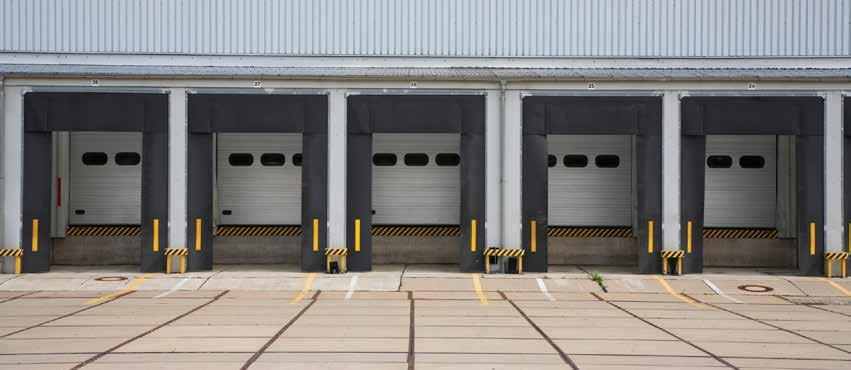
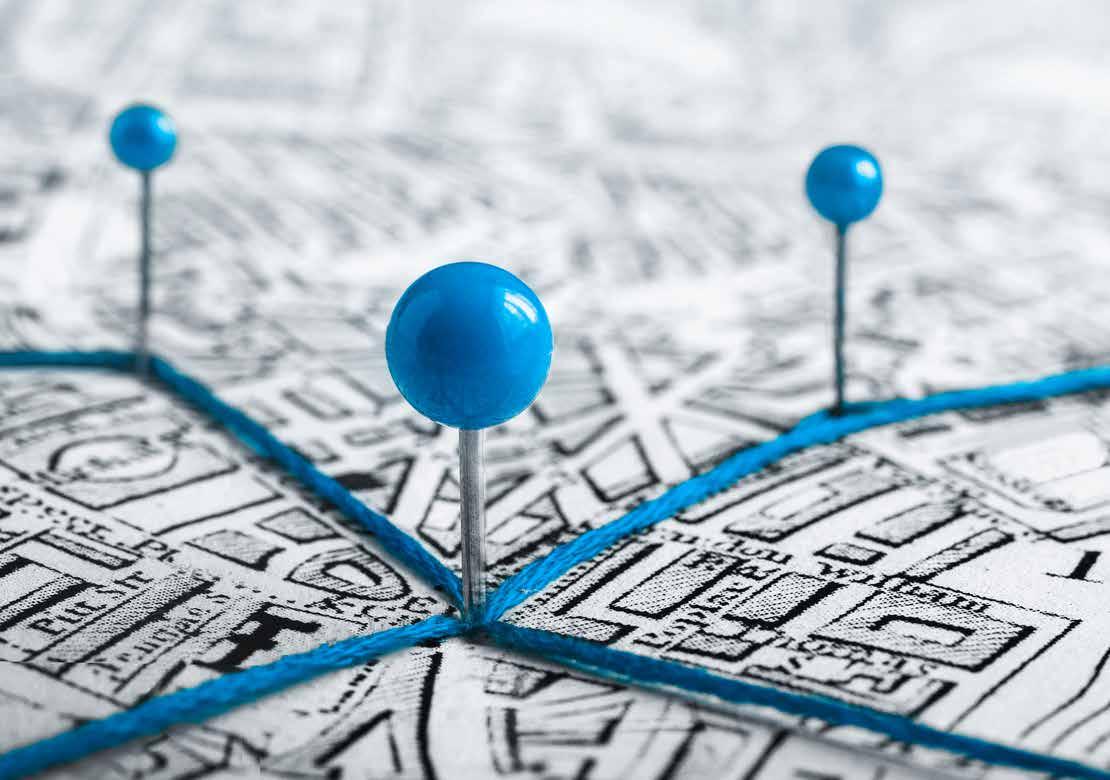
Now that you know the type of facility you need, it’s time to find the perfect location. When choosing where to locate your warehouse or distribution center network, you will want to assess favorable traffic connections with suppliers and key markets, easy freeway access, proximity to railways and airports, and a qualified workforce.
It is recommended that you conduct a formal warehousing location study that will take these and other important factors into account. If you don’t have in-house real estate planning or network
engineering capabilities, you will want to find a partner who is experienced in market analysis, site selection and acquisition, build-to-suit planning, lease negotiation and site layouts.
You should also consider starting with a thorough network design engineering analysis. During this process, a review of current data such as volume, customer locations and current warehouse locations is performed. This will be used to determine optimal locations.
Once you have a site secured, the next step in warehouse planning is the layout and design. The overall design of a warehouse should remove inefficiencies and maximize performance with streamlined access to goods.
Warehouse space is at a premium, so it’s important to fully utilize the square footage within your warehouse while also ensuring orders can be fulfilled quickly. Optimizing the placement of products should be based on volume and usage for faster put-away and picking. And storage strategies, such as racking, can be designed to utilize vertical space, while aisle width can be adjusted with the use of certain material handling equipment.
There are many variables that affect warehouse operations, so it’s important to research and analyze several data sets to create designs that ensure efficient inventory control and labor management.


Identifying the most effective locations for inventory makes it easier to get products out the door faster. Slotting patterns often change as demand shifts, such as during peak production periods, promotional periods or seasonal surges.
If a product moves every day or every week, it is an “A” mover and should be closer to the door. Products that are moving once a month don’t need a prime location. Over time, you put the fast movers in areas where you can pick them quicker.
An ever-changing competitive environment makes it increasingly important to maximize warehouse space and efficiency. Regular analysis and adjustment are essential to keep warehouses operating at full potential.
Analysis of your warehouse design and layout should be completed at least once a year to ensure efficiency. Some industries, such as food and beverage operations, change slotting patterns seasonally to account for seasonal demands such as produce.
Engineers can establish rules within the warehouse management system (WMS) to show how needs might change. If you do not have these in-house engineering capabilities, a third-party logistics provider (3PL) can provide a slotting analysis to improve warehouse utilization and efficiency of fulfillment operations which can uncover hidden opportunities to save costs.
Moving inventory around the warehouse efficiently is no easy task. Operational processes are key to speeding up fulfillment, cutting costs and improving customer service while also maintaining visibility and flow within the warehouse. Below are some common processes and methods you should examine as you think about warehouse operations.
The moment the product arrives at your facility you need to know where it’s headed, how it needs to be handled, and how long it may need to stay there. Effective inventory receiving requires the development of safe, fast and organized processes for handling received inventory, as well as processes for accurately tracking that inventory from the time it arrives in your warehouse to the time it’s shipped.
Material handling equipment (MHE) will be needed based on size and weight of the inbound product. How it arrives and how it is packed, as well as any special handling requirements, will dictate the type of equipment used to receive and put away inventory.
Your requirements may also be based on how you are storing inventory, such as floor storage, racking or shelving. Hand trucks, pallet jacks or forklifts
are common MHE, while reach trucks, sideloaders, wire-guided equipment, conveyors or elevators are more specialized.
Picking product for outbound customer orders remains one of the most critical functions of a warehouse and it is of the utmost importance for orders to be picked quickly, accurately and safely.
Equipment used for picking is highly variable with a wide range of options depending on the type of product to be picked (each, case or pallet) and how it is stored. Pallet, case or unit/each picking requires its own set of tools to get the job done.
Most warehouses today use RF Barcode Readers to improve pick speed and accuracy while also transmitting data back to the WMS. Wearable scanners and voice picking are examples, and new technologies such as robotics and automation are changing the game even further. See more about picking technologies on page 14.
Packing shipments into boxes or cartons also requires additional space for packing stations equipped with materials and supplies as well as weighing, measuring and labeling equipment.

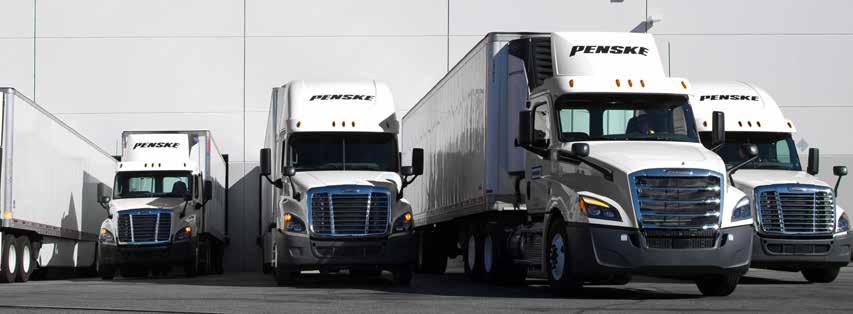
This is a big step that you can’t overlook. Keys to shipping the perfect order are ensuring you have done all the required previous steps for handling at your location. Ensuring that the shipment is ready on time is crucial.
You should also think about how your product will be shipped to properly prepare, or stage, the load. Much like inbound freight, the same level of thought should be considered for outbound freight. Mode accessibility and the type of product leaving your warehouse will determine what amount of space and material handling equipment suits your needs.
An often-overlooked component of inventory management is tracking the incoming, outgoing and stored trailers or equipment at your facility. You need a plan for handling the trailer before it arrives at your gate and for where it goes when it arrives. Sometimes trailers are parked in the yard to hold excess inventory, making it imperative to know exactly what is on each trailer and where it is located. Yard management systems (YMS) can help manage yard operations. (Learn more about YMS on page 12.)
Every good warehouse operation has a system and process to measure and analyze productivity metrics such as safety, accuracy, efficiency, customer impacts and employee engagement. You will want to be sure you identify the right metrics that are important for your business and maintain consistent, set standards for collecting data, communicating and improving.
To help improve efficiency within the warehouse, continuous improvement and lean processes and principles — which focus on eliminating waste and reducing activities that don’t add value — can create significant advantages for a business. Continuous improvement should involve all employees so that everyone is constantly aware of improvement opportunities. A successful program will be part of an operation’s culture with training, tracking and recognition. (Read more: Maximize Warehouse Operations with Continuous Improvement Initiatives.)
Warehouse technologies and systems play a vital role in operations, providing visibility into the entire flow of inventory inside your facility. Keeping track of your inventory is critical and you may want to consider more advanced capabilities for complex supply chains.
Technology applications within a warehouse are plentiful and range from software platforms to robotics, some of which utilize machine learning, artificial intelligence and advanced data analytics to improve efficiency and productivity. The following are just some of the more important technologies you will want to consider.
Warehouse productivity and efficiency are paramount to operational success and there are many tools that can be used to ensure maximum optimization to reduce labor costs and expenses. With so many platforms and software systems available to help manage warehouse operations, the choices can be overwhelming.
Understanding the types of systems available, the capabilities of each, and the sophistication that you need is a key component of successful implementation. If you are using multiple systems, your platforms should be capable of working, or integrating, together so you can make intelligent and informed decisions.

Technology is one of the most important aspects to warehouse operations. A warehouse management system (WMS) is a software application that supports the operations of a warehouse by centralizing tasks, optimizing productivity and enhancing inventory accuracy. It is considered the heart of warehousing technology.
You will want to find a warehouse management system that tracks the flow of inventory throughout the facility. The data allows users to track a product from the initial receipt to the final pick, down to the individual SKU, ensuring a quick response in the event of a recall or spike in demand.
The WMS should also be configurable to specific business processes to receive and ship inventory as well as integrate with other systems such as ERP, transportation, labor or yard management systems.
When selecting a WMS, it is important to choose a platform that can integrate with your transportation management system (TMS). The WMS can send shipment information to the TMS to ensure precise shipment tracking and can receive information from the TMS so everyone knows what will arrive when. When the TMS and WMS communicate effectively, you increase visibility, streamline warehouse operations, receive more accurate
See related article: Improve Efficiency by Opening Lines of Communication Between Your TMS and WMS.
information, increase trailer utilization and improve labor planning.
A yard management system (YMS) provides the link between the TMS and the WMS to provide visibility into freight that is onsite, but not inside the warehouse. Some WMS platforms include a YMS application. A YMS will help you know what is sitting in the yard to enable planning for handling the trailer before it arrives at the gate and what happens when it does arrive.
To manage and measure labor productivity and efficiency, you will want to consider employing a labor management system (LMS). An LMS combines software and engineering to maximize employee performance and warehouse utilization. The value of the labor management system is evident in terms of associate relations, management effectiveness and operational effectiveness. Read more about labor management systems related to productivity and efficiency on page 18.


There are many types of technology systems with various levels of sophistication. Choosing your technology platforms should be based on the needs and complexity of your operations. Complex or large distribution networks may require a Tier-1 platform, while moderately complex networks may find a Tier-2 system adequate. You should apply the correct system for your business based on the complexity of your needs. Multiple locations, integration with other systems, and the functions you need it to manage will all need to be taken into consideration.
Third-party logistics providers will often have their own proprietary software systems, or they may use and build upon commercial software systems. When considering a 3PL, you will want to evaluate whether they will require use of their own system or integrate with the system you already have in place.
A common misconception is that systems can be plugged in and seamlessly work together, but the reality is that disparate systems and data sources often present challenges. It’s not as easy as plug and play.
All technology platforms require IT support to implement, manage and develop customized applications to meet your needs. If you do not have dedicated, internal IT support to provide maintenance and software updates, you may want to work with a third-party logistics provider that has a large team of dedicated experts. A good partner provides IT-based services to help create value for their customers by reducing costs and increasing operational efficiency.
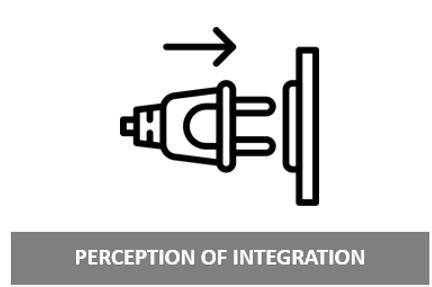
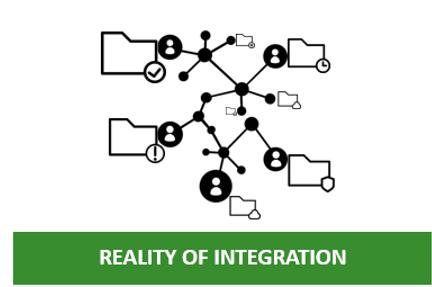
Smart warehousing includes new technologies to help automate processes, increase productivity and operate efficiently. It is often a combination of systems that work together, from sensors and RFID to robots and drones. Keeping up with new technologies is an important part of managing an efficient warehouse.
When considering the use of new technologies within a warehouse, it is important to evaluate the benefits and return on investment that they will provide you. New technologies can be costly to purchase, implement and maintain. Thirdparty providers are often helpful to evaluate what technologies are right for your business and can help implement them.
Using wireless technology to directly communicate instructions to operators and directly relay information back to the WMS increases operator productivity while keeping inventory and order information within the system current to real time.
Wearable technology allows operators to keep both hands free for stacking and selecting
purposes without the need to set a handheld device down. These technologies communicate order information directly to the operator to speed picking and reduce errors. A few common picking technologies are described below:
RF Scanners: Handheld or wearable scanners that use radio frequency to communicate with the WMS. The scanner provides information about the pick location or placement and confirms accuracy.
Pick-to-Light: Light-directed picking technology that provides an accurate and efficient method of picking, putting or sorting products.
Voice Pick: Voice-directed picking using a Bluetooth® headset that provides real-time activity tracking.
Augmented Reality: Smart glasses, smartphones or tablets that pinpoint the pick locations and display the relevant information including location, quantity, item and an optional picture of the product, through the device.
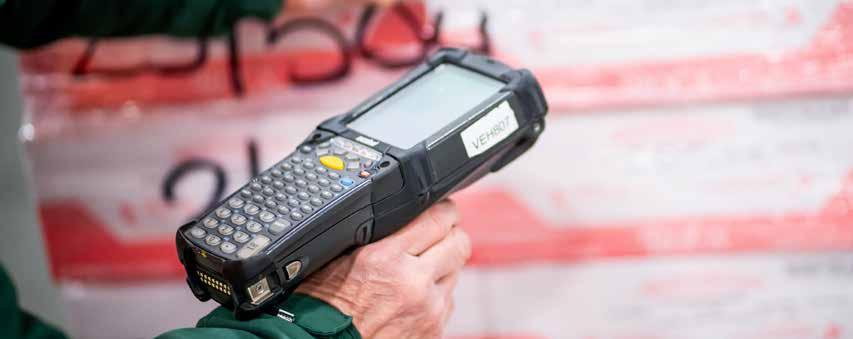
More and more shippers are looking to automation or robotics within their warehouses to eliminate dependence on large workforces. These technologies can help automate the pickup and delivery process at the warehouse by selecting and bringing materials to an operator instead of the operator walking through the warehouse. Automation also improves productivity, reduces labor costs and expedites processes while ensuring quality is still in line with company standards.
Automation focuses on moving product directly to the operator using conveyors, sorters or pallet flows that can improve overall efficiency within the warehouse. Robots are used for retrieving and picking materials into order bins so the order selection process can be completed with little to no human interaction.
When considering automation and robotics, companies can use the Crawl, Walk, Run, Sprint approach. Assessing your current level of technological sophistication is the first step; then you must develop a strategy to determine your budgetary and business goals.


Uses existing IT systems, requires technology upgrades to move forward

Intended for simple requirements infrastructure, such as
Begins to integrate technology using existing
Uses warehouse management system or outsource to 3PL
I I Uses mostly manual, paper-based processes

Invests in automation and robotic technology within WMS system controls

Increase speed to market through productivity and high-volume capacity ERP or MRP systems
Warehouse management system or outsourced 3PL provider enhances supply chain by integrating with customer's ERP or MRP system
MRP system

Internet of Things (IoT) connects the devices within a warehouse to your systems via the internet. Devices can include picking technologies, such as those listed above, drones, RFID, or sensors that collect and send data. IoT devices help to improve real-time visibility and accuracy of inventory.
The fifth generation of mobile phone networks, commonly known as 5G, will accelerate and expand the digital revolution that is already transforming supply chain management. 5G will have a big impact on warehousing and distribution. The more powerful wireless infrastructure will eliminate much of the traditional circuitry that warehouses need to operate and will improve connectivity to warehouse management systems and technology, providing greater range and speed.
5G will also lower connectivity barriers for IoT sensors by reducing the power requirements. Instant updates of cargo movements will enhance the performance of augmented reality (AR) devices, enabling managers to reduce order-picking error rates and enhance workforce productivity.
Agile supply chain technology solutions allow companies and supply chains to harvest and use data in new ways. Machine learning (ML) and artificial intelligence (AI) technology can compile, analyze and present data while also recommending the best course of action. Additionally, ML and AI excel at finding anomalies, patterns and insights in large data sets.
ML and AI in the supply chain help process data so you can see different options faster. When AI is layered on top of ML, the system can start building various scenarios automatically. That can reduce expediting expenses, increase planning efficiencies, reduce inventory investments, and improve customer fulfillment.
More and more companies are focused on sustainability within their operations. Sustainability, in general, focuses on reducing energy and power consumption or replacing it with cleaner energy sources such as solar, but can also include platforms that manage lights, internet or Wi-Fi technologies. As states, municipalities and the government begin to adopt cleaner energy policies and legislation, it is important to consider developing a plan to adopt sustainable strategies.
The cost of labor can account for 65%-70% of total warehouse fulfillment costs (excluding trucking), depending on how a facility is owned and managed. It represents the most significant piece of a warehousing budget.
Worker-related costs have grown considerably in response to increased economic activity and a tight labor market. The growth in e-commerce volumes, as well as the number of SKUs, has driven up demand for storage space — and consequently, demand for people needed to run the facilities.
Recruiting, hiring, training, safety, productivity and staffing volume are just some of the many necessities to managing labor within a warehouse.
Calculating the amount of labor you need to run your warehouse is one of the biggest challenges beyond recruiting and hiring. Too many people for the workload and you have idle workers and increased costs. Too few, and you risk delays and inaccuracies.
A labor analysis will help you determine your staffing needs by function, shift and classification based on anticipated volume.
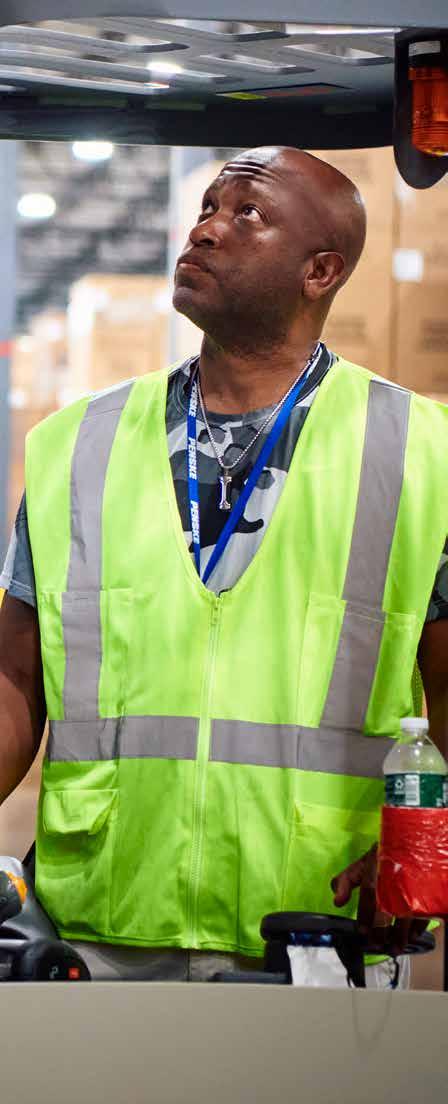
Warehouse productivity and efficiency are paramount to operational success. To manage and measure labor productivity and efficiency, you will want to implement a labor management system (LMS).
An LMS combines software and engineering to maximize user performance and warehouse utilization. It will help track and monitor performance, allowing you to have more visibility and establish motivational incentives and reward programs for employees. The value of the labor management system is evident in terms of associate relations, management effectiveness and operational effectiveness.
Implementation of an effective labor management program requires a measured process that allows ample time for employees at all levels to integrate the new requirements and to see the benefits of this initiative. To learn more about implementing an LMS and creating an effective labor management environment, read An Efficient Warehouse: More Than Just Software
Advancements in automation and digitization within the warehouse are having an impact on the demand for talent. An example is the growing need for soft skills (such as communications) as well as technical skills. There are a range of support services required to help a warehouse operate and drive operational performance.
Whether you want to monitor cost, shipping accuracy or on-time deliveries, you need people in place to perform the tasks. Support personnel can provide a wide range of services, such as:
• Data validation
• Actionable analysis
• Safety programs
• Labor standards
• Security
• Food safety
• Maintenance tasks
• Clerical work
• Information technology

In addition to the information covered throughout this guide, below you will find helpful worksheets and analysis tools designed to help guide you through the decision-making process.

If you are thinking about expanding or relocating a warehouse, it’s typically easier, faster and more cost effective to find existing warehouse space rather than to build. But with either scenario, you will need to determine basic requirements to lease, buy or build a warehouse that meets your needs now and into the future.
Whether you are calculating your needs yourself or working with a third party, you will need to know these numbers to estimate the amount and type of warehouse space you will need.
Anticipated length of occupancy
If you need short-term space (less than three years) or need location flexibility, leasing or multi-client options should be considered. Building a warehouse requires a long-term commitment – construction is costly and developers often require a 10-year lease or more for build-to-suit options.
Facility square footage
Facility clear height (ceiling height)
Cubic feet
Warehouse square footage requirements between 75,000 and 100,000 square feet are often more suited to multi-client warehousing. However, there may be other factors to consider, including number of employees or product volume.
Number of SKUs
Number of pallets
Size of pallets (length, width and height)
Refrigeration/freezer space
Inbound volume
Outbound volume
Current warehouse utilization
Picking/packing stations
Factor in the cost of any special requirements you might need to the space, such as the addition of cold storage or other equipment. Integrating coils to cool products can be expensive and may require upgraded electrical infrastructure.
Office space (square footage)
A typical rule of thumb is to allow 30%-35% of total square footage for common areas, equipment storage and staging areas.
Projected growth
Anticipated new SKUs (three- to five-year sales plan) minus obsolete SKUs
Doors needed – inbound
Door size
Drive-in door requirements
Doors needed – outbound
Door height
Door widths and dock height should be able to accommodate the type of equipment that will be used and can meet operational requirements.
Assess utilities to make sure it can support your needs and that everything is in good working order.
Electricity (amperage requirements and service size)
Electric charging stations (vehicles or MHE)
Gas/propane
Solar and potential offset
Water
Waste removal
Sewer/septic
Phone (including cellular availability)
Internet (5G availability)
Assess the condition of the building so that you do not incur extra maintenance costs.
Walls Refrigeration/freezers
Roof Plumbing
Floor Elevators/ADA access
Lighting Zoning considerations
POTENTIAL OBSTRUCTIONS
Building columns
HVAC ducts/equipment
EXTERIOR SPACE
Fans and blowers
Fire sprinklers, alarms, smoke detectors
Certifications
HVAC
Electrical panels/transformers
Make sure that you have ample yard space and parking for employees and tractor trailers.
Parking
Truck maneuvering
EQUIPMENT
Outside storage
Pavement condition
If you are leasing or purchasing an existing building, inspect any equipment that might be included. This is also a good time to assess your needs in type and quantity of equipment.
DOCK EQUIPMENT
Boards
Bumpers
Lighting
Two-wheeler
LIFT EQUIPMENT
Pallet jacks
Rolling ladders
Forklifts
PACKING AND SHIPPING
Work tables
STORAGE
Racking system
Scales
Hoppers
Plates
Ramps
Strip doors
Other
Carts
Dollies
Conveyors
Workbenches
Shelving
Trailer jacks
Cranes
Dock lift
Lift tables
Service carts
Scissor lifts
Banding machine
Bins, boxes and baskets
If outsourcing to a 3PL or other third party is part of your decision process, there are many questions you should ask a potential provider.
• Do they have experience and a proven track record within your industry?
• Are they financially stable? (Check their financial strength rating to assess stability.)
• Do they have a strong reputation and brand in the marketplace?
• Do they meet deadlines?
• Do they have all required certifications needed for your type of operation?
• How will the support team and labor requirements be structured?
• Do they have real estate planning capabilities?
• Can the provider grow with you?
• Do they have crisis management and contingency plans in place?
• Can they handle planned or sudden demand surges?
• What KPIs do they measure?
• Does the provider use continuous improvement or lean practices and processes?
• Do they conduct regular efficiency analyses, such as cycle counting, slotting analysis, labor analysis or network analysis?
• How will they report this information back?
• Do they provide solutions to help avoid, mitigate or reduce costs?
• What technology systems do they use, and can they integrate with the systems already in place?
• Can they provide real-time visibility tools or applications?
• What are their engineering capabilities?
• Are they innovative in terms of the solutions they implement and the technology they deploy?
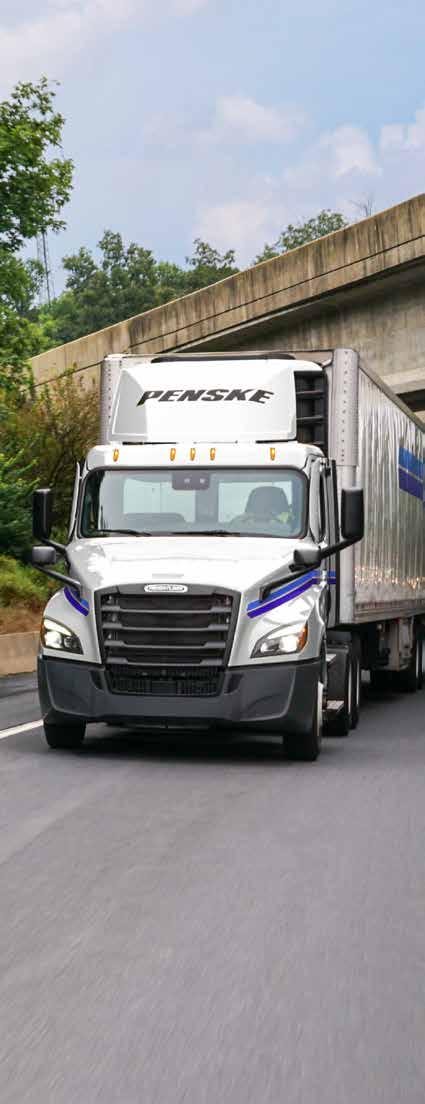
As a leading third-party logistics provider, we offer specialized solutions tailored to your operations, production and market demands. From management and execution of activity within your warehouses, to redesigning and refining your distribution network and implementing it, we can create the perfect solution to meet your needs.
We offer both dedicated and multi-client warehousing, and with over 300 locations worldwide, you can get the clean, safe, secure and scalable warehousing solutions to meet your needs. If you need a customized space, Penske consulting services can create the perfect space for you.
Penske also uses data to help you make the most of your information. Our ClearChain® technology suite is a solution that streamlines your data and produces useful information. It provides visibility, enhances supply chain optimization, drives business results and keeps operations moving.
As a core strength of our organization, we also possess deep expertise in facilities and real estate, and have extensive experience in the acquisition and management of labor and in the management of information systems. Penske has the tools in place to keep your business moving forward.
For more information on how Penske can assist you with warehousing and distribution, transportation optimization and supply chain management, contact Penske Logistics at 800-529-6531 or through the website at penskelogistics.com/contact-us.